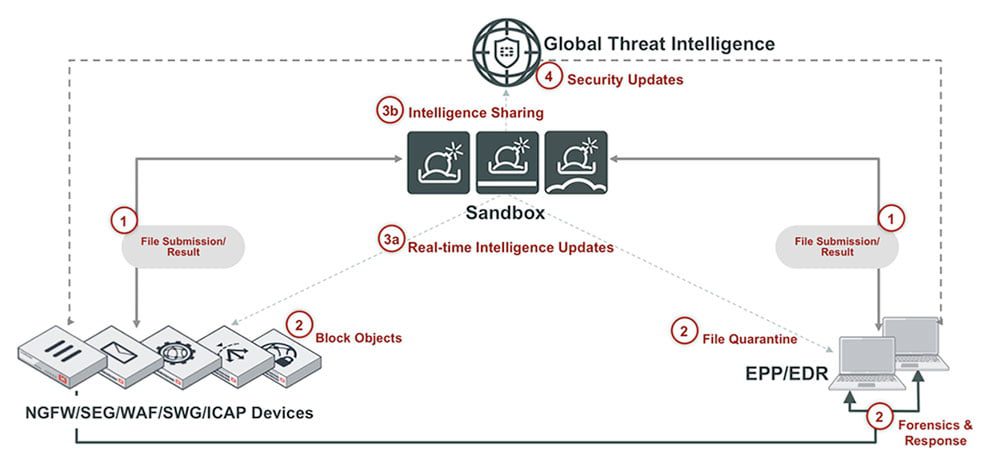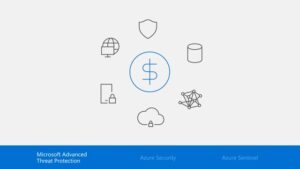Introduction
Cybersecurity has never been more crucial than it is today. With a 300% increase in cyberattacks in recent years, digital protection has become a top priority for both businesses and individuals. This article will explore how Microsoft's solutions can help protect your organization against cyber risks, manage vulnerabilities, and strengthen your online defense.
Summary
Microsoft Security Solutions
Microsoft is an undisputed leader in the field of cyber security, offering a variety of sophisticated products adapted to modern needs.
Microsoft Defender for cyber security
O Microsoft Defender is not just a simple antivirus. It is a real-time protection package that protects against a wide range of threats, such as malware, ransomware and phishing. As well as providing robust defenses, Microsoft Defender also includes automatic learning capabilities that allow it to adapt to new threats.
Azure Security Center
O Azure Security Center is more than just a monitoring tool. It offers valuable insights into the security posture in cloud environments, helping to detect and remediate vulnerabilities before they can be exploited. With features such as security assessments and actionable recommendations, Azure Security Center is an indispensable addition to your security strategy.
Microsoft 365 Security
O Microsoft 365 Security is an integrated set of tools that covers email protection, data loss prevention and access control. With a variety of functionalities, from multi-factor authentication to threat analysis, Microsoft 365 Security offers a powerful shield against modern threats.
Attack Prevention Strategies in Cybersecurity: The Proactive Path to Robust Defense
In an increasingly digitalized world, maintaining a strong security posture is not just a necessity, but an obligation for companies. Going beyond the use of effective security tools is crucial; it also involves implementing a series of proactive practices that can anticipate and mitigate possible risks.
- Employee training and awareness: The weakest link in any security system is often the human factor. Training employees to identify and respond to threats such as phishing or malware is vital.
- Attack simulations: Carrying out cyber attack simulations helps to test the effectiveness of security measures and prepares the team for real events.
- Constant monitoring: Using tools that monitor the system in real time can identify suspicious activity before it becomes a serious threat.
- Regular Updates and Patches: Outdated software is an easy target. Keeping all systems up to date ensures that known vulnerabilities are patched.
- Audits and Risk Assessments: Regular reviews of security policies and systems can reveal weaknesses before they are exploited by attackers.
- Incident Response: Having a well-structured incident response plan ensures that, in the event of a breach, the company can act quickly to minimize damage.
By adopting these proactive strategies, companies not only strengthen their cyber security, but also create a culture of vigilance that is the first line of defense against cyber threats.
Cybersecurity Response Plans
Creating a Security Incident Response Plan (SIRP) can help your organization act effectively and in a coordinated manner in the event of a breach. This plan should be reviewed and tested regularly to ensure its effectiveness.
Backups
Regular backups are one of the most effective ways of protecting your data. Make sure backups are made in multiple locations, including cloud storage and external hard drives, to facilitate rapid recovery.
The importance of up-to-date software
Keeping your software up to date is vital for cyber security. Updates often contain security patches that resolve known vulnerabilities that could be exploited by attackers.
Automatic updates
To ensure that you don't miss any critical updates, configure your tools and systems to update automatically.
Regular updates and patches
Keep all systems, applications, and devices up to date with the latest security patches to reduce vulnerabilities and exposures. O US-CERT provides information about patches and security updates.
Risk Management
Effective risk management is crucial to protecting your organization against advanced threats.
Risk Assessment
Perform regular risk assessments to identify and prioritize the highest risk areas in your IT infrastructure.
Incident Response Plan
Develop an incident response plan to ensure that your organization can respond quickly and effectively to any security breach.
As data becomes more valuable and difficult to protect, Microsoft offers security solutions for identity and access management, information protection, threat protection, and security management.
Continuous monitoring and analysis
Implement continuous monitoring and analysis solutions to identify potential threats in real time and act quickly to mitigate the associated risks.
Strengthening Cyber Defense
Taking additional steps to strengthen your organization's online defense is key to provide a security in the long term.
Access Controls
Establish access controls to ensure that only authorized persons have access to the information
Data Encryption
Protect sensitive data, both at rest and in transit, using robust encryption to reduce the risk of data breaches and information leaks.

Two-factor authentication
Deploy two-factor authentication (2FA) to add an extra layer of security to login processes and access to critical systems.
Conclusion
Cyber security is a constantly evolving field, with new threats emerging at an alarming rate. It is imperative to adopt a robust and flexible security strategy that can adapt to the changing threat landscape. Investing in security solutions, such as those offered by Microsoft, along with proactive practices, can considerably strengthen your security posture and minimize risks.






